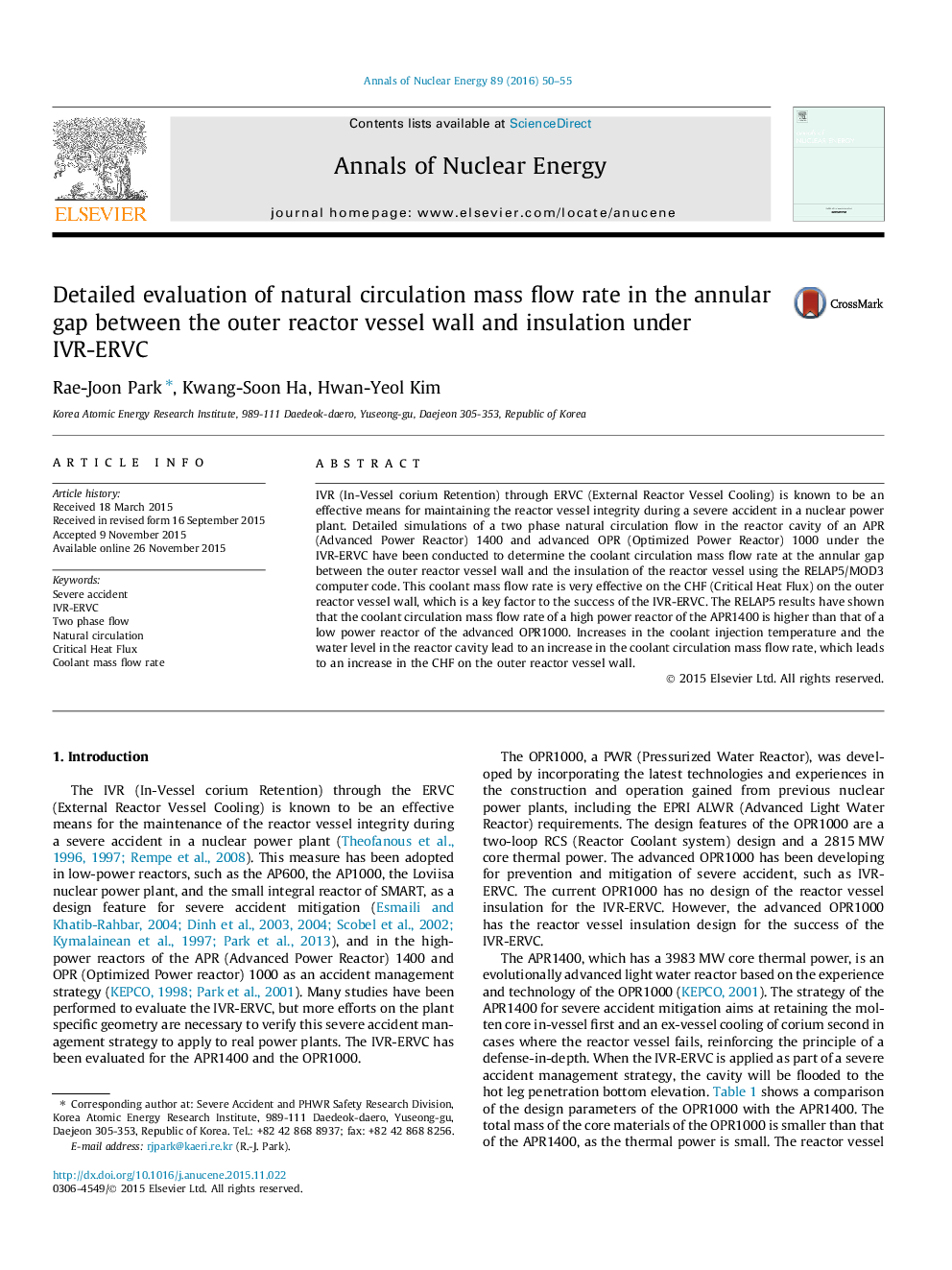| کد مقاله | کد نشریه | سال انتشار | مقاله انگلیسی | نسخه تمام متن |
|---|---|---|---|---|
| 1728052 | 1521108 | 2016 | 6 صفحه PDF | دانلود رایگان |
• RELAP5 analysis under the IVR-ERVC was conducted to determine the coolant circulation mass flow rate.
• The bigger two phase natural circulation flow was generated at the annulus.
• The coolant circulation mass flow rate of the APR1400 is higher than that of the OPR1000.
• Coolant injection temperature affects the coolant circulation mass flow rate.
• Water level in the reactor cavity affects the coolant circulation mass flow rate.
IVR (In-Vessel corium Retention) through ERVC (External Reactor Vessel Cooling) is known to be an effective means for maintaining the reactor vessel integrity during a severe accident in a nuclear power plant. Detailed simulations of a two phase natural circulation flow in the reactor cavity of an APR (Advanced Power Reactor) 1400 and advanced OPR (Optimized Power Reactor) 1000 under the IVR-ERVC have been conducted to determine the coolant circulation mass flow rate at the annular gap between the outer reactor vessel wall and the insulation of the reactor vessel using the RELAP5/MOD3 computer code. This coolant mass flow rate is very effective on the CHF (Critical Heat Flux) on the outer reactor vessel wall, which is a key factor to the success of the IVR-ERVC. The RELAP5 results have shown that the coolant circulation mass flow rate of a high power reactor of the APR1400 is higher than that of a low power reactor of the advanced OPR1000. Increases in the coolant injection temperature and the water level in the reactor cavity lead to an increase in the coolant circulation mass flow rate, which leads to an increase in the CHF on the outer reactor vessel wall.
Journal: Annals of Nuclear Energy - Volume 89, March 2016, Pages 50–55
